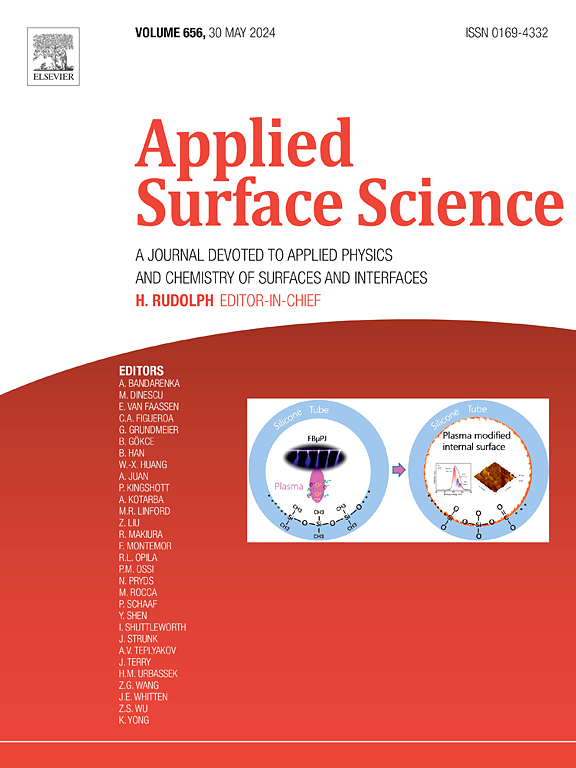模拟阳光下Ni、Zn共掺杂Ag3PO4光催化剂增强光催化性能的降解机理
IF 6.3
2区 材料科学
Q2 CHEMISTRY, PHYSICAL
引用次数: 0
摘要
本文成功制备了Zn掺杂和Ni、Zn共掺杂Ag3PO4光催化剂。光催化降解实验表明,随着Zn2+含量的增加,催化性能得到改善。然而,在Ag3PO4中掺杂Zn的浓度本身是有限的。本文通过在晶格中引入Ni离子来提高Zn2+离子的固溶性,从而进一步缩小带隙,从而显著提高载流子分离率。同时,态密度计算表明,单独引入Ag3PO4晶格时,Zn和Ni的杂质态均位于价带内;但同时引入两者会在带隙内产生杂质水平的Ni,这可以作为一个浅陷阱来捕获光生电子,从而促进载流子的迁移和分离。Ni和Zn的共掺杂有效地调节了Ag3PO4的电子和能带结构,从而促进了活性物质的生成,增强了Ag3PO4的光催化性能。本研究为在半导体中掺杂金属离子提高光催化剂对污染物的降解能力提供了新的参考。本文章由计算机程序翻译,如有差异,请以英文原文为准。

Degradation mechanism of Ni, Zn co-doping on Ag3PO4 photocatalysts for enhancing photocatalytic performance under simulated sunlight
In this work, Zn-doped and Ni, Zn co-doped Ag3PO4 photocatalysts were successfully prepared. Photocatalytic degradation experiments demonstrated that the catalytic performance could be improved with increasing Zn2+ content. However, the doping concentration of Zn in Ag3PO4 is inherently limited. Herein, Ni ions were introduced into the lattice to improve the solid solubility of Zn2+ ions, thereby further narrowing the band gap, as a result, the carrier separation rate got significantly improved. Meanwhile, density of state calculations showed that the impurity states of Zn and Ni were all located inside the valence band when introduced into the Ag3PO4 lattice alone; but the simultaneous introduction of both of them generates an impurity level of Ni within the bandgap, which could act as a shallow trap to capture photogenerated electrons, thereby facilitating the migration and separation of the carriers. The co-doping of Ni and Zn effectively modulated the electron and band structure of Ag3PO4, thereby promoting the generation of more active species and enhancing the photocatalytic performance of Ag3PO4. This work provides a new reference for improving the pollutants degradation capability of photocatalysts by doping metal ions in the semiconductor.
求助全文
通过发布文献求助,成功后即可免费获取论文全文。
去求助
来源期刊

Applied Surface Science
工程技术-材料科学:膜
CiteScore
12.50
自引率
7.50%
发文量
3393
审稿时长
67 days
期刊介绍:
Applied Surface Science covers topics contributing to a better understanding of surfaces, interfaces, nanostructures and their applications. The journal is concerned with scientific research on the atomic and molecular level of material properties determined with specific surface analytical techniques and/or computational methods, as well as the processing of such structures.
 求助内容:
求助内容: 应助结果提醒方式:
应助结果提醒方式:


